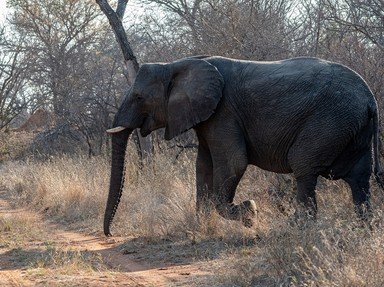Quiz Answer Key and Fun Facts
1. The African Elephant is smaller than the Asian Elephant
2. The tips of the trunks of the African and Asian Elephant are different.
3. The Asian Elephant has more toes on each foot than the African Elephant
4. The gestation period for an elephant is 22 months.
5. There are two types of African Elephants.
6. The person who looks after and rides an Asian Elephant is called a mahout.
7. The colour of the skin of an elephant is white at birth.
8. An elephant can reproduce once it attains an age between 8 to 15 years.
9. An elephant has between 300 to 315 bones in its body
10. Elephants tusks are really elongated teeth.
Source: Author
wenray
This quiz was reviewed by FunTrivia editor
gtho4 before going online.
Any errors found in FunTrivia content are routinely corrected through our feedback system.

